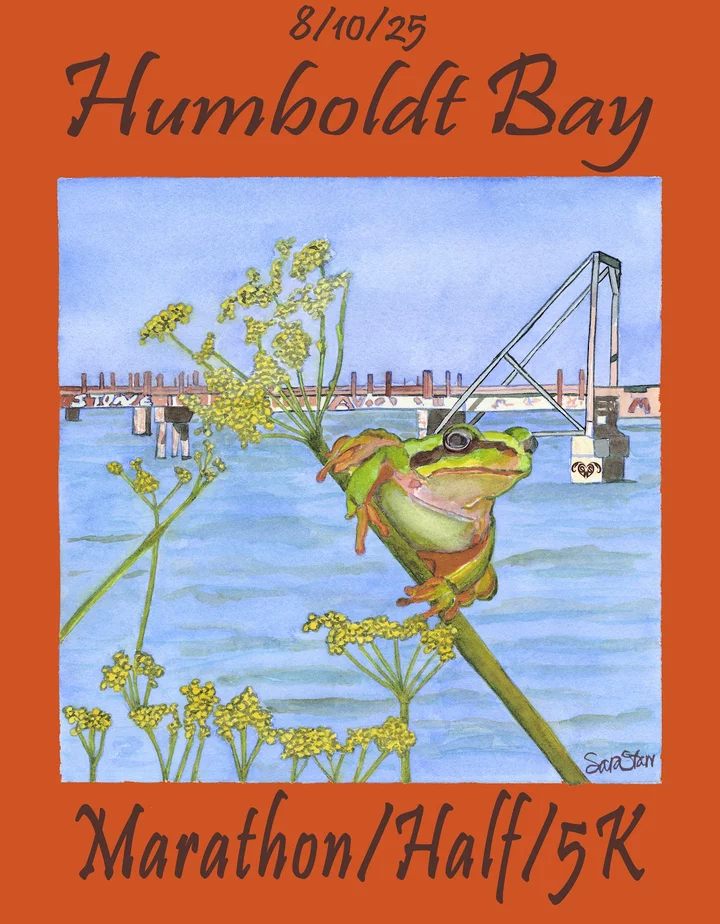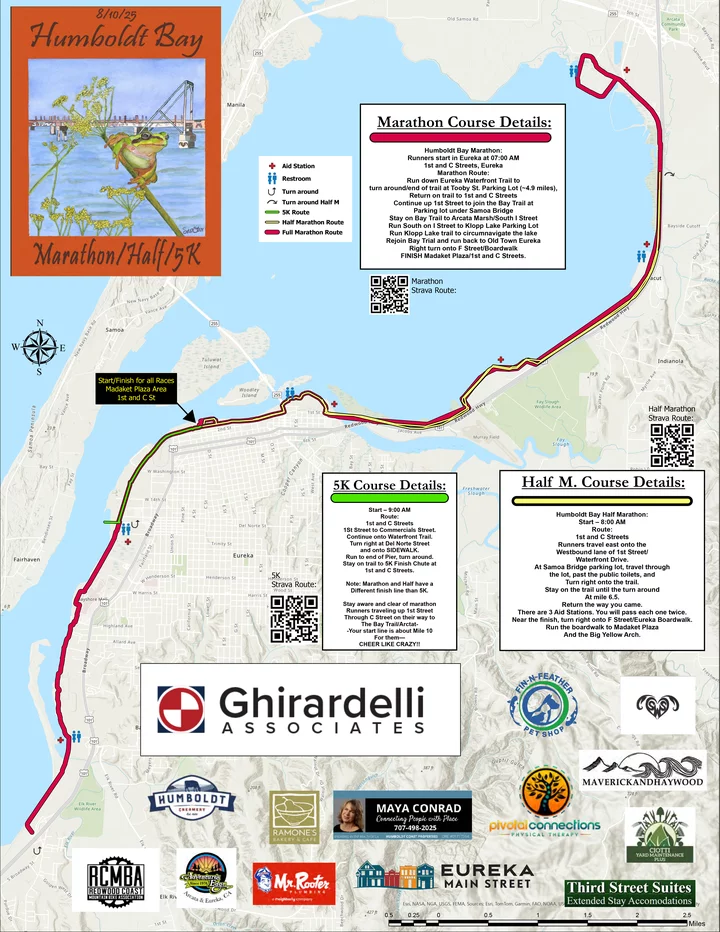They can’t call this year’s event the “10th Annual Humboldt Bay Marathon” because they had to take a year off for COVID, but the first running of the Humboldt Bay Marathon was indeed 10 years ago and much has changed. Empires have risen. They have crumbled. Billions have been born; probably fewer than that have died. But by far the most substantial change between 2015 and now was the construction of the Humboldt Bay Trail, which promises to change everything. Forever. At least for the race.
On August 10, around 90 runners will tackle the marathon, which for the first time ever will utilize the barely month-old Bay Trail from Madaket Plaza up to Arcata, where runners will circle Klopp Lake and then make the trip back down. (Another 150 runners will run the half-marathon and the 5K.) In past editions, runners had to do two out-and-backs along the Waterfront Trail, and had to share limited trail space with the half-marathoners.
“Some people were like, ‘I love that,’” said race director Terri Vroman Little in an interview with the Outpost. “Most people were like, ‘I don’t want to go back over.’ I wouldn’t want to either.”
It’s a development that Vroman Little, 62, has been looking forward to for years, even sneaking onto the trail to do some running before its official completion. Earlier editions of the race necessitated heavy doses of traffic control, especially during the first edition, which blocked a lane on Highway 255. That race racked up costs of around $20,000 and came nowhere close to breaking even. The later use of the Bayfront Trail and the double out-and-backs meant that the race saw little of the eponymous bay; now, almost all of the marathon’s 26.2 miles will have a view.
“We’re called ‘Humboldt Bay Marathon,’ so the more access runners have to running alongside the bay just make it more ‘Humboldt Bay Marathon-ey,’” Vroman Little said. “And that new section behind the Brainard old mill site has been off-limits for decades. Now, being able to not just get back there myself, but being able to send runners from all over the place out there to see it — like, you can have eyes on Humboldt State, if you know where to look.”
A map of the Humboldt Bay Marathon course.
The view of the university has meaning for Vroman Little beyond a simple, pretty vista. Her friend Suzanne Seemann lectured for HSU’s geography department before she was killed in an intentional hit-and-run while running with Vroman Little and friend Jessica Hunt in 2012. The crash mangled Vroman Little, but she managed to recover enough to run the Famous Idaho Potato Marathon in 2018. Her injuries made it a “grim shit-show,” but regardless, she finished. She has no desire to run another one.
Seemann’s legacy is imbued into the marathon’s DNA. Her initials, SWS, have been hidden in every hand-drawn Humboldt Bay Marathon poster made for the event, and the race used to pass by where she died, a gesture Vroman Little said “reclaimed” the site.
Her death brought Vroman Little and Seemann’s husband Hank Seemann closer together. Hank Seemann, the current deputy director of Humboldt County’s environmental services division, had been an instrumental force behind the development of the Bay Trail.
“I hardly knew him,” Vroman Little said. “Like, he was just the guy who held the kids in the window to wave goodbye to Suzie, and then we would go for runs and come back. I didn’t really know him until after she died. So, in part, his work on the Bay Trail and the McKay Community Forest was like — he wants that for the community, and it was just a quiet, heartfelt thing to honor runners and honor Suzie.”
Little hopes that every runner who competes enjoys the hell out of it.
“Most people have trained for months to run this,” Vroman Little said. “This is their day…I just want them to feel like they won, even if it wasn’t the perfect race.”


CLICK TO MANAGE